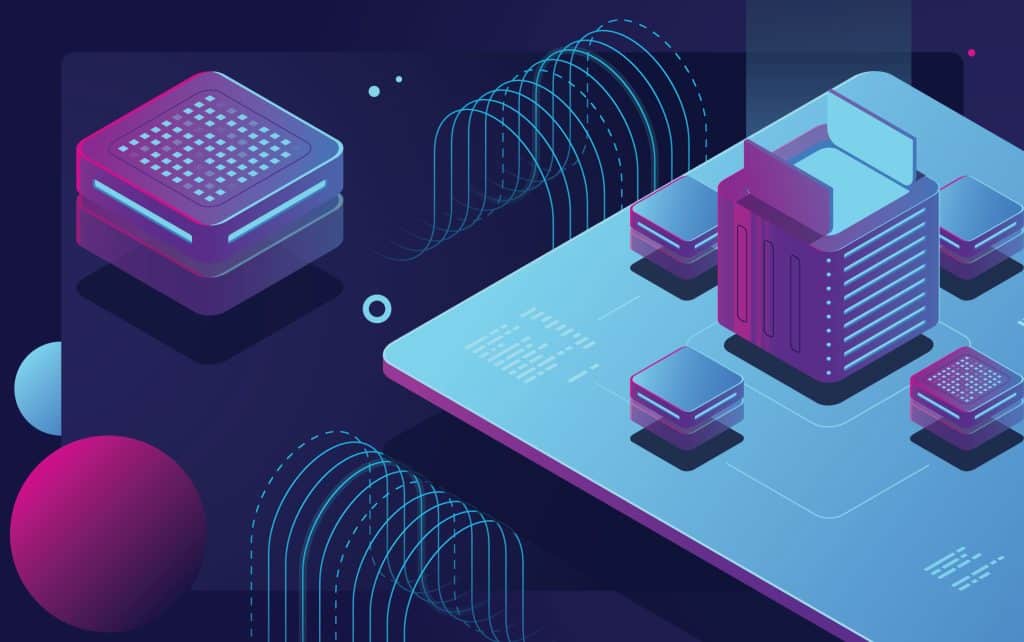In the realm of SaaS development, the adoption of serverless architecture has brought forth a paradigm shift, offering a multitude of advantages that extend beyond mere convenience. By redefining traditional approaches to infrastructure management, serverless architecture has ushered in a new era of scalability, flexibility, and cost-effectiveness. The implications of this shift are far-reaching, promising to reshape the landscape of SaaS software development company. As organizations navigate the complexities of modern technology landscapes, a closer examination of the benefits inherent in serverless architecture is paramount for ensuring sustained success and innovation in the competitive SaaS sector.
Understanding the Role of Serverless Architecture in SaaS Development
Serverless architecture offers SaaS software development companies a streamlined approach to managing infrastructure, enabling a sharp focus on code logic. Leveraging serverless web apps becomes a strategic advantage in the rapid innovation and efficient delivery of value to customers. Understanding the role of serverless architecture in SaaS development is crucial for reshaping the future landscape of the software industry.
What Makes Serverless Architecture Ideal for SaaS Software Development Company?
Serverless architecture offers SaaS software development companies unparalleled scalability and flexibility by abstracting away infrastructure management complexities. This approach enables rapid development and deployment of applications, empowering organizations to innovate efficiently and deliver value to customers with agility. Embracing serverless architecture reshapes the landscape of software development, promising cost-efficiency and enhanced productivity in the SaaS industry.
Scalability and Flexibility
In the realm of Software as a Service (SaaS) development, the concept of serverless architecture has revolutionized the approach companies take towards ensuring scalability and flexibility in their applications.
- Scalability: Automatically scales based on demand.
- Flexibility: Allows for easy modifications and updates.
- Cost-efficiency: Pay only for the resources used.
- Enhanced performance: Optimized for speed and efficiency.
Rapid Development and Deployment
The accelerated pace of software development and deployment in the realm of SaaS solutions is significantly influenced by the adoption of serverless architecture, reshaping the efficiency and agility of SaaS software development companies. By eliminating the need for managing servers and infrastructure, developers can focus on writing code, leading to quicker iterations, faster feature delivery, and streamlined deployment processes, ultimately enabling rapid innovation and enhanced time-to-market capabilities.

Leveraging Serverless Web Apps for SaaS Platform Development
Exploring the key components of serverless web apps is crucial for SaaS platform development. By integrating serverless architecture into the development process, companies can leverage the benefits of scalability, flexibility, and cost-efficiency. Understanding the role of serverless architecture in SaaS development is essential for reshaping the future of the software industry.
Exploring the Key Components of Serverless Web Apps
By delving into the intricate components of serverless web apps, we uncover the pivotal role that serverless architecture plays in optimizing SaaS platform development.
- Function as a Service (FaaS)
- Scalability and Auto-Scaling Capabilities
- Event-Driven Architecture
- Pay-Per-Use Pricing Model
Integrating Serverless Architecture into SaaS Platform Development
Integrating serverless architecture into SaaS platform development represents a pivotal shift in optimizing efficiency and innovation within the software industry. By leveraging serverless web apps, SaaS companies can focus on developing core functionalities without managing infrastructure, leading to enhanced scalability and cost-effectiveness. This approach streamlines the development process, enabling rapid innovation and efficient delivery of value to customers in the competitive SaaS market.
Building a Serverless Backend for Your SaaS Solution
When crafting a serverless backend for your SaaS solution, key considerations include designing a scalable and resilient architecture to accommodate varying workloads and ensure system reliability. Additionally, managing data and workflows within a serverless environment necessitates a strategic approach to optimize performance and streamline processes effectively. By addressing these aspects thoughtfully, organizations can harness the full potential of serverless architecture to enhance their SaaS offerings and drive business success.
Designing a Scalable and Resilient Serverless Backend
Designing a scalable and resilient serverless backend for your SaaS solution is a foundational aspect that lays the groundwork for efficient and effective application development and deployment. To ensure optimal performance and reliability, consider the following key practices:
- Microservices Architecture: Break down your application into smaller, independent services to enhance scalability and maintainability.
- Auto-scaling: Implement auto-scaling mechanisms to dynamically adjust resources based on workload, optimizing cost efficiency.
- Fault Tolerance: Build redundancy and error-handling mechanisms to enhance system resilience in the face of failures.
- Monitoring and Logging: Utilize monitoring tools and logging services to track performance metrics, identify bottlenecks, and troubleshoot issues proactively.
Managing Data and Workflows in a Serverless Environment
Optimizing data management and workflow orchestration within a serverless environment is pivotal for constructing a robust backend infrastructure for your SaaS solution. In a serverless architecture, data storage, retrieval, and processing are fundamental components that require careful consideration to ensure seamless functionality. Leveraging managed services like AWS Lambda and Azure Functions can streamline data handling and workflow automation, enhancing scalability and efficiency. Additionally, implementing event-driven architecture enables real-time data processing and seamless task orchestration. By integrating these practices into your serverless backend, you can create a resilient infrastructure capable of adapting to dynamic SaaS requirements.
| Data Management | Workflow Orchestration |
|---|---|
| Utilize managed services | Implement event-driven architecture |
| Ensure data integrity | Enable real-time data processing |
| Optimize data retrieval | Streamline task automation |
| Secure data storage | Facilitate seamless workflows |
Exploring the Benefits of Serverless Architecture in SaaS Development
Serverless architecture in SaaS development offers a strategic advantage by optimizing resource utilization, allowing companies to scale efficiently based on demand. Additionally, the seamless integration with serverless technologies simplifies the development process, enabling faster deployment and enhanced system reliability. Embracing these benefits empowers SaaS companies to stay agile, reduce operational costs, and deliver innovative solutions to their users with greater speed and precision.
Optimizing Resource Utilization with Serverless Solutions
Efficient resource utilization is a cornerstone of serverless solutions in SaaS development. Through dynamic scaling and precise resource allocation, serverless architecture optimizes performance while eliminating the wastage of idle resources and associated overhead costs. This strategic approach not only enhances operational efficiency but also drives significant cost savings, making it a compelling choice for modern SaaS companies.
Dynamic Scaling and Resource Allocation
Dynamic scaling and resource allocation play pivotal roles in the efficiency and performance optimization of SaaS applications leveraging serverless architecture.
- Rapidly adjusts resources based on demand.
- Enhances application responsiveness.
- Optimizes cost-effectiveness by allocating resources as needed.
- Ensures seamless performance during traffic spikes.
Eliminating Idle Resources and Overhead Costs
With the elimination of idle resources and reduction of overhead costs, serverless architecture in SaaS development optimizes resource utilization, leading to enhanced operational efficiency and cost-effectiveness. By automatically scaling resources based on demand, serverless solutions ensure that companies only pay for the actual computing power used, eliminating the need to maintain idle servers and reducing unnecessary expenses, ultimately driving better financial outcomes for SaaS businesses.

Achieving Seamless Integration with Serverless Technologies
In the realm of SaaS development, achieving seamless integration with serverless technologies is pivotal for leveraging the full potential of third-party services, enabling real-time data processing, and implementing an event-driven architecture. By harnessing the power of serverless architecture, SaaS companies can effortlessly incorporate external services, process data instantaneously, and design systems that respond dynamically to events. This integration not only enhances the scalability and responsiveness of SaaS applications but also fosters a more agile and innovative development environment.
Integrating Third-Party Services in SaaS Development
How can serverless architecture enhance the seamless integration of third-party services in SaaS development, revolutionizing the efficiency and flexibility of software solutions?
- Simplified API Integration
- Scalability and Elasticity
- Cost-Effective Resource Management
- Enhanced Security Measures
Real-Time Data Processing and Event-Driven Architecture
Serverless architecture in SaaS development not only enhances the seamless integration of third-party services but also enables real-time data processing and event-driven architecture, revolutionizing the efficiency and flexibility of software solutions. By leveraging serverless technologies, SaaS platforms can react to events instantly, process data in real-time, and scale dynamically based on demand, ensuring optimal performance and responsiveness for users.
Enhancing Developer Productivity in SaaS Software Development
Enhancing developer productivity in SaaS software development involves streamlining development workflows with serverless architecture, which eliminates the need for managing infrastructure and deployment manually. By automating these tasks, developers can focus more on writing code and rapidly iterating on software features, leading to quicker time-to-market and enhanced agility in responding to customer needs. The efficiency gains achieved through serverless architecture enable developers to work more efficiently, ultimately driving innovation and improving the overall development process in SaaS environments.
Streamlining Development Workflows with Serverless
In the realm of SaaS software development, optimizing development workflows through the utilization of serverless architecture has become a cornerstone for enhancing developer productivity. When streamlining development workflows with serverless, teams benefit from:
- Reduced Time to Market: Serverless architecture allows developers to focus on writing code without the need to manage servers, leading to faster deployment of features.
- Improved Scalability: The auto-scaling nature of serverless platforms ensures applications can effortlessly handle varying workloads.
- Cost-Efficiency: With serverless, companies only pay for the actual compute time used, eliminating the cost of idle resources.
- Simplified Maintenance: Serverless providers handle server management, updates, and security patches, freeing up developers to concentrate on enhancing the application.
Automating Deployment and Infrastructure Management
Automating deployment and infrastructure management in SaaS software development plays a pivotal role in optimizing operational efficiency and boosting developer productivity. By leveraging automation tools and processes, SaaS companies can streamline the deployment of new features, updates, and fixes, reducing human error and accelerating time-to-market. Automated infrastructure management ensures that resources are efficiently utilized, scaling up or down based on demand without manual intervention. This not only optimizes performance but also helps in cost management by eliminating unnecessary resource allocation. Moreover, automation enables developers to focus on innovation and code quality rather than repetitive deployment tasks, fostering a culture of continuous improvement and rapid iteration in SaaS software development.
Addressing Common Challenges in Serverless SaaS Development
When developing SaaS solutions with serverless architecture, managing dependencies and mitigating vendor lock-in risks are crucial aspects that demand attention. Additionally, ensuring effective monitoring, debugging, and performance optimization strategies is essential for maintaining the reliability and efficiency of serverless applications. By addressing these common challenges proactively, SaaS development teams can enhance the stability and scalability of their serverless solutions, ultimately delivering a superior experience to end-users.
Managing Dependencies and Vendor Lock-in Risks
To mitigate potential challenges in serverless SaaS development, strategic management of dependencies and careful consideration of vendor lock-in risks are crucial for ensuring long-term success and adaptability. When addressing these aspects, it is essential to:
- Leverage Open-Source Solutions: Utilize open-source libraries and frameworks to reduce reliance on proprietary technologies.
- Implement Dependency Versioning: Ensure consistent behavior by specifying exact versions of dependencies to prevent unexpected updates.
- Vendor Diversification: Spread services across multiple providers to mitigate the risk of being locked into a single vendor.
- API Standardization: Adopt industry standards for APIs to facilitate seamless migration between different serverless platforms.

Monitoring, Debugging, and Performance Optimization
In navigating the realm of serverless SaaS development, a key focus lies on effectively managing monitoring, debugging, and performance optimization to address prevalent challenges within this innovative architecture. Ensuring seamless operation and optimal performance of serverless applications requires robust monitoring tools to track functions, identify bottlenecks, and troubleshoot issues in real-time. Debugging in a serverless environment demands specialized techniques due to the event-driven nature of functions, necessitating comprehensive logging and monitoring integrations. Performance optimization centers on fine-tuning functions, minimizing cold start times, and maximizing resource utilization to enhance overall efficiency. By proactively addressing these aspects, developers can unlock the full potential of serverless architecture in SaaS development.
| Monitoring | Debugging | Performance Optimization |
|---|---|---|
| Real-time tracking of functions | Specialized techniques for event-driven functions | Fine-tuning functions for efficiency |
| Identifying bottlenecks | Comprehensive logging integrations | Minimizing cold start times |
| Troubleshooting in real-time | Monitoring integrations | Maximizing resource utilization |
Comprehensive Software Development Solutions
Unlock the potential of digital transformation with our bespoke software development services, engineered to foster innovation, maximize efficiency, and catalyze business growth.
Conclusion
In conclusion, the adoption of serverless architecture in SaaS development has proven to be a game-changer, offering unparalleled scalability, flexibility, and cost-efficiency. By streamlining processes, enhancing developer productivity, and driving transformative changes in the industry, serverless architecture has reshaped the future of software development. As organizations continue to leverage the benefits of serverless architecture, the potential for innovation and value delivery in the SaaS sector remains promising.
How Does Serverless Architecture Impact the Overall Cost of Saas Development Projects?
Serverless architecture significantly reduces the overall cost of SaaS development projects by eliminating the need to provision and manage servers. This approach allows for precise resource allocation, automatic scaling, and pay-as-you-go pricing models, optimizing financial resources effectively.
What Security Considerations Should Be Taken Into Account When Implementing Serverless Architecture in Saas Solutions?
Security considerations when implementing serverless architecture in SaaS solutions are crucial. Factors like secure coding practices, proper authentication and authorization mechanisms, data encryption, monitoring, and compliance with industry standards must be prioritized to mitigate risks and safeguard sensitive information effectively.
Can Serverless Architecture Seamlessly Integrate With Existing Legacy Systems in Saas Platforms?
Serverless architecture can seamlessly integrate with existing legacy systems in SaaS platforms by leveraging APIs and event-driven functions. This integration allows for enhanced scalability, agility, and cost-effectiveness, ensuring a smooth transition and efficient operation.
What Are the Best Practices for Monitoring and Debugging Serverless Applications in a Saas Environment?
Monitoring and debugging serverless applications in a SaaS environment requires proactive strategies. Utilize comprehensive logging, distributed tracing, and real-time metrics to identify issues swiftly. Implement automated alerting and analytics tools to ensure optimal performance and reliability.



